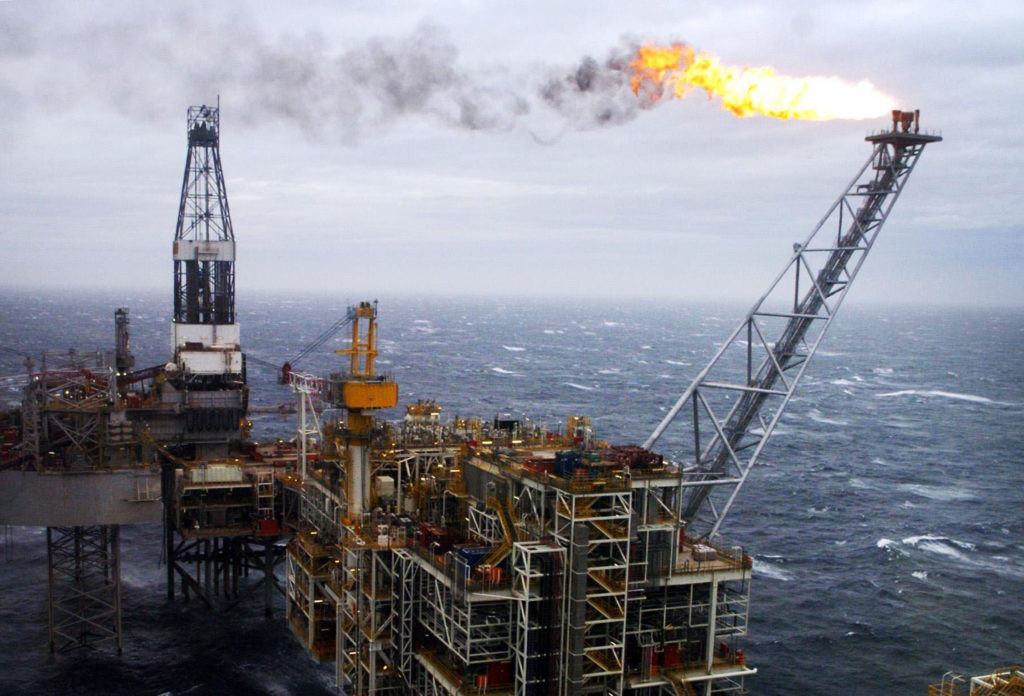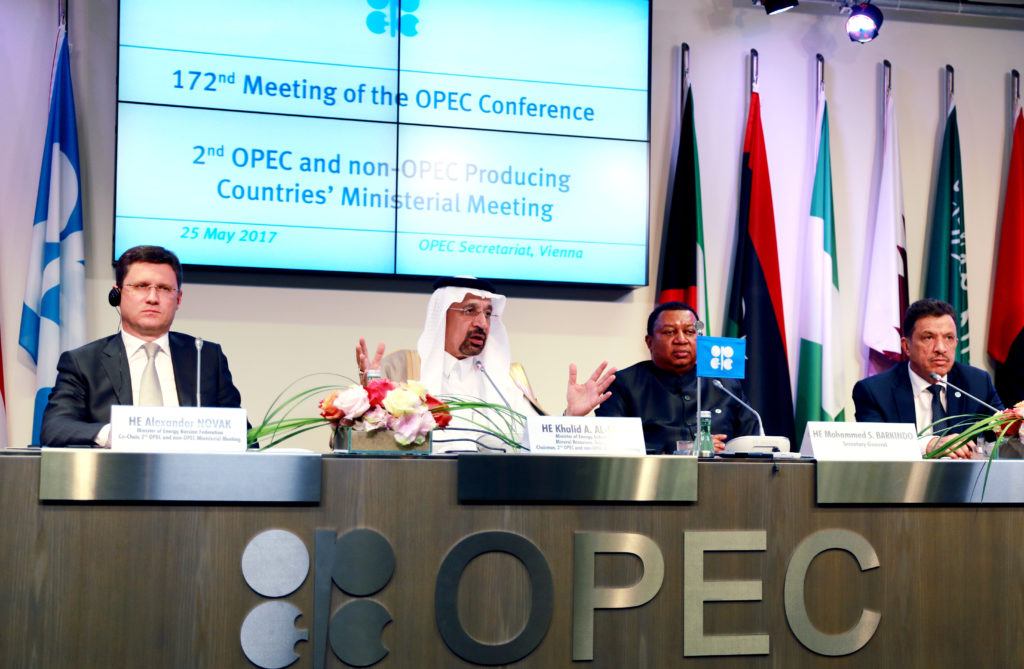Credit: Vladimir Smirnov/Tass/PA Images

This week UnHerd is taking a deep dive into the oil market to explain the current state of the industry and to wonder, ‘What would a world with oil priced at $10 a barrel look like?’. This introduction from Peter Franklin is the first in the series.
There’s an old saying: If you want to make God laugh, tell Him your plans.
Alternatively, show Him your oil price forecast.
The whole field is a case study in the fallibility of experts. For instance, here, from just before the millennium, is the Economist anticipating a continuing slide in the oil price:[1. The Economist, ‘The next oil price shock’, 4 March 1999]
“…$10 [a barrel] might actually be too optimistic. We may be heading for $5…Thanks to new technology and productivity gains, you might expect the price of oil, like that of most other commodities, to fall slowly over the years. Judging by the oil market in the pre-OPEC era, a ‘normal’ market price might now be in the $5-10 range. Factor in the current slow growth of the world economy and the normal price drops to the bottom of that range.”
What actually happened next was a world-changing rally in oil prices – spiking at over $140 dollars a barrel in July 2008. Prices came crashing back down again with with the financial crisis, but then unexpectedly recovered to over $100 in the early part of this decade – before surprising everyone by halving between mid-2014 and the start of 2015.[2. Macrotrends, ‘Crude Oil Prices – 70 Year Historical Chart’, November 2017]
This prompted a prediction from the veteran financial analyst Gary Shilling that prices were heading even lower, perhaps as far down to $10.[3. A. Gary Shilling, Forbes Investing News Letters, ‘$10 to $20 per barrel oil is still likely’, 6 May 2016] Since then, prices have in fact hardened. As of mid-November, they were heading up towards $60 – prompted by concerns over political turmoil in Saudi Arabia.
Why is predicting the oil price so difficult? And, more to the point, why are we so desperate to keep trying?

Why oil is special
Let’s start with what makes oil so valuable in the first place. Most obviously, it’s a fossil fuel – countless years of photosynthesised solar energy in geologically concentrated form. But oil isn’t just concentrated energy, it is liquid concentrated energy. This makes all the difference. As you’ll remember from school, a liquid flows but holds its volume. Oil is therefore easier to move around, process and consume than coal or gas.
That’s especially important when it comes to transport. In the age of steam, our ships and trains relied on coal. But by the early 20th century, it was obvious that oil would change everything.
It was an issue that Winston Churchill had to grapple with in his capacity as First Lord of the Admiralty in the years before the First World War. Great Britain was faced with a decision of huge strategic importance – whether to upgrade from a coal-based to an oil-based navy. Churchill knew it had to be done. Fuelled by oil, ships weren’t just faster, they were also less visible to the enemy because they produced less smoke. Furthermore liquid oil, unlike solid coal, can be pumped – allowing ships to be refuelled at sea from tankers instead of having to find a friendly port.[4. And without exhausting the crew with the backbreaking work of loading coal onboard]
The big drawback was security of supply. At the time, Britain had plenty of coal, but no oil. The ensuing dilemma (utility versus security) would only become more acute as it became clear that oil wouldn’t only make ships and trains more efficient, but would also realise the potential of smaller, lighter forms of transport – i.e. road vehicles and aircraft. Coal made the industrial revolution possible, but oil made modernity possible.
Oil is central to our way of life, which is what makes it so valuable. Per unit of energy contained, it typically commands a significant premium over coal and gas. For instance in 2010, the US price of petroleum was $13.43 per million BTU (British Thermal Units) versus $5.69 for natural gas and $2.08 (or less) for coal.[5. Robert Rapier, Forbes, ‘The price of energy’, 26 January 2010]
The geopolitics of oil
However, to explain why that higher price is so volatile we need to consider the other concentrated thing about oil – it’s geographical location. Oil can be found in many places around the world, but the most abundant and easily exploited oil reserves are to be found in just a few locations – most importantly in the Middle East. The sheer concentration of such wealth tends to concentrate power in the hands of those who can control it by force of arms. It is, therefore, no accident that oil-dominated economies tend to have undemocratic governments with values hostile to our own.
The result is a deep strategic vulnerability that western governments have struggled with for more than a century. When, in 1913, Churchill was challenged on his decision to make the Royal Navy dependent on a foreign source of energy, this was his response:[6. Winston Churchill, House of Commons Hansard, 17 July 1913, column 1477]
“…it is not a case of choosing this course against that. On no one quality, on no one process, on no one country, on no one company, and no one route, and on no one oil field must we be dependent. Safety and certainty in oil lie in variety, and in variety alone.”
The West has endeavoured to keep things that way ever since – and it’s greatest achievement in this regard was the creation of a global market for oil. Thanks to the oil tanker, oil can be transported from anywhere in the world, to anywhere in the world. Unlike, say, a natural gas pipeline from Russia to a neighbouring country, particular oil importers are much less dependent on particular oil exporters.
However, though the global market helps with security of supply, it offers no guarantee on price. Exporters with the technical and economic ability to flex their production levels up and down (i.e. those with the biggest reserves that can be most easily and cheaply exploited) have a huge influence on the amount of oil supplied to the market. This is especially true of Saudi Arabia, which has long enjoyed its status as the world’s ‘swing producer’ – a power it has magnified through its leadership of the OPEC cartel.

The global oil market, therefore, is not a normal market, but one that can be manipulated by a small number of people in a small number of countries – and often for non-economic motives.
The impact on growth, jobs and prices in the West has been profound – with oil prices both the cause and effect of economic boom and bust over many decades.
Unsurprisingly, Western governments have sought to influence the politics of the Middle East – with the goal of keeping prices low and stable, but often by means of diplomatic and military interventions that have had the opposite effect.
Further complications
If these complications were not enough, we can now add several others to the mix.
Firstly, the rise of China as a great industrial power with a corresponding thirst for imported oil. Last year Chinese imports exceeded America’s for the first time. [7. Meng Meng and Florence Tan, Reuters, ‘China overtakes U.S. again as world’s top crude importer’, 13 October 2016]
Secondly, the depletion of the world’s biggest, most easily exploited oil fields. According to a report by HSBC, “81% of world liquids production is already in decline” and at a rate that means “the world could need to replace over 4 times the current crude oil output of Saudi Arabia” just to maintain current supply.[8. Kim Fuster et al, Global oil supply: Will mature field declines drive the next supply crunch?, HSBC, September 2016] Replacing so much exhausted capacity would mean relying on ‘unconventional’ sources of supply which require higher inputs of capital and technical expertise. While fears of a near-term peak in oil production may have come and gone with the 2008 spike in prices, we can agree with a former Shell CEO when he said that the age of “easy oil” is over.[9. Jeroen van der Veer interviewed by Lee Hudson Teslik, Council on Foreign Relations, 3 April 2008]
Thirdly, there’s been rapid progress on one form of unconventional oil (and gas) extraction – the use of directional drilling and hydraulic fracturing (‘fracking’) to exploit tight oil formations. The fracking revolution has reversed the long-term decline in US oil production, making America less dependent on imports.
Fourthly, the lifting of sanctions on Iraq and then Iran has opened up supply from two of the world’s top ten oil producers.
Fifthly, multiple military conflicts in the Middle East, including those in Syria, Iraq and Yemen, have had an impact on oil prices – but not, so far, the expected one. Regional rivalries have undermined OPEC unity. Indeed, it is argued that Saudi Arabia has allowed oil prices to fall in order to punish Iran and Russia for their interventions in Syria. However, if the political and religious enmity between Saudi Arabia and Iran escalates from various proxy wars to direct conflict, the impact on oil production and supply could be devastating.
Sixthly, Russia remains the biggest producer and second biggest net exporter of oil in the world. It’s economy is heavily dependent on revenues from exports to the West – but it also uses those revenues to fund interventions that bring it into conflict with the West.
Of these six factors, the first and second put upward pressure on prices, the third and fourth downward pressure, while the fifth and sixth could go either way. The precise balance between these and other conflicting influences is shifting all the time, which is why oil prices are so volatile – and also, in the absence of perfect information and super-human judgement, so hard to predict.

Demand destruction
But what if there were a new factor, one so overwhelming as to make the balance between the others irrelevant? Many experts believe that such a force has been unleashed and is gathering strength: the force of demand destruction.
Oil imposes so many costs on the West – geopolitical, economic and environmental – that we’d surely be using alternatives if they were available. In fact, in some sectors, such as electricity generation, that’s exactly what’s happened.
However, in the transport sector, our options are limited. Or, rather, they were. Improved fuel efficiency and biofuels are curbing our appetite for oil, but another technology could pretty much kill it.
Rapid progress is being made by battery electric vehicles. Governments and car manufacturers are queuing up to announce their plans for a comprehensive switch to electric vehicles over the next two or three decades. Furthermore, the climate change commitments that nations have entered into under the Paris Agreement requires a phasing-out of fossil fuel use from most sectors of the economy – including road transport.
Just how much global oil demand would this destroy? According to BP, cars currently account for the 20% of global oil demand [10. Spencer Dale and Thomas D Smith, BP, Back to the future: electric vehicles and oil demand, October 2016]. However, that is not the limit of what could disappear as a result of electrification. Advances in battery technology mean that other demand sectors are vulnerable too – including heavier road vehicles which account for 24% of global oil demand. Batteries combined with increasingly cheap renewable energy has the potential to drive out the world’s remaining oil-fired electricity generation (another 5% of global oil demand according to the BP figures).
Of the remaining half, much of that could go too. Industrial uses of oil account for 28 per cent of global demand. However, a big chunk of that is used in the process of extracting and refining oil. In the United Kingdom, for instance, the energy sector uses as much oil for its own energy needs as all the other industrial sectors put together.[11. Department of Business, Energy and Industrial Strategy, Digest of UK Energy Statistics 2017, July 2017, table 1.1, page 30] We can reasonably expect the oil industry’s own demand to decline in proportion to the overall decline in demand.
That leaves just a few slivers of demand. Some like the use of oil as a heating fuel in the domestic, commercial and public sectors can be readily displaced by electricity, natural gas and energy efficiency measures. Others, especially aviation, present a much tougher challenge – but can’t possibly make up for demand destruction elsewhere.
Conclusion
Therefore, unless the development of battery electric vehicles runs into an unexpected brick wall or the world suddenly abandons its fight against climate change, the bottom is set to drop out of the oil market.
A world of $10 oil may finally come to pass – and within most of our lifetimes. For the West (and the other oil importing nations) that will be a world in which, paradoxically, the oil price doesn’t matter anymore – because we won’t be using much of it. The decades of disruption caused by the rise and fall oil prices will be over. As will a key strategic vulnerability for the West. For the big oil exporters, however, the impact will not be as positive. Indeed, unless they adapt, it will be economically devastating. But there is a sliver-lining. Despotic governments that could previously rely on their oil wealth, will have rely on their people instead. This too will have consequences.
Read part two in UnHerd’s oil series: Wars and words: a crude history of oil prices










Join the discussion
Join like minded readers that support our journalism by becoming a paid subscriber
To join the discussion in the comments, become a paid subscriber.
Join like minded readers that support our journalism, read unlimited articles and enjoy other subscriber-only benefits.
Subscribe